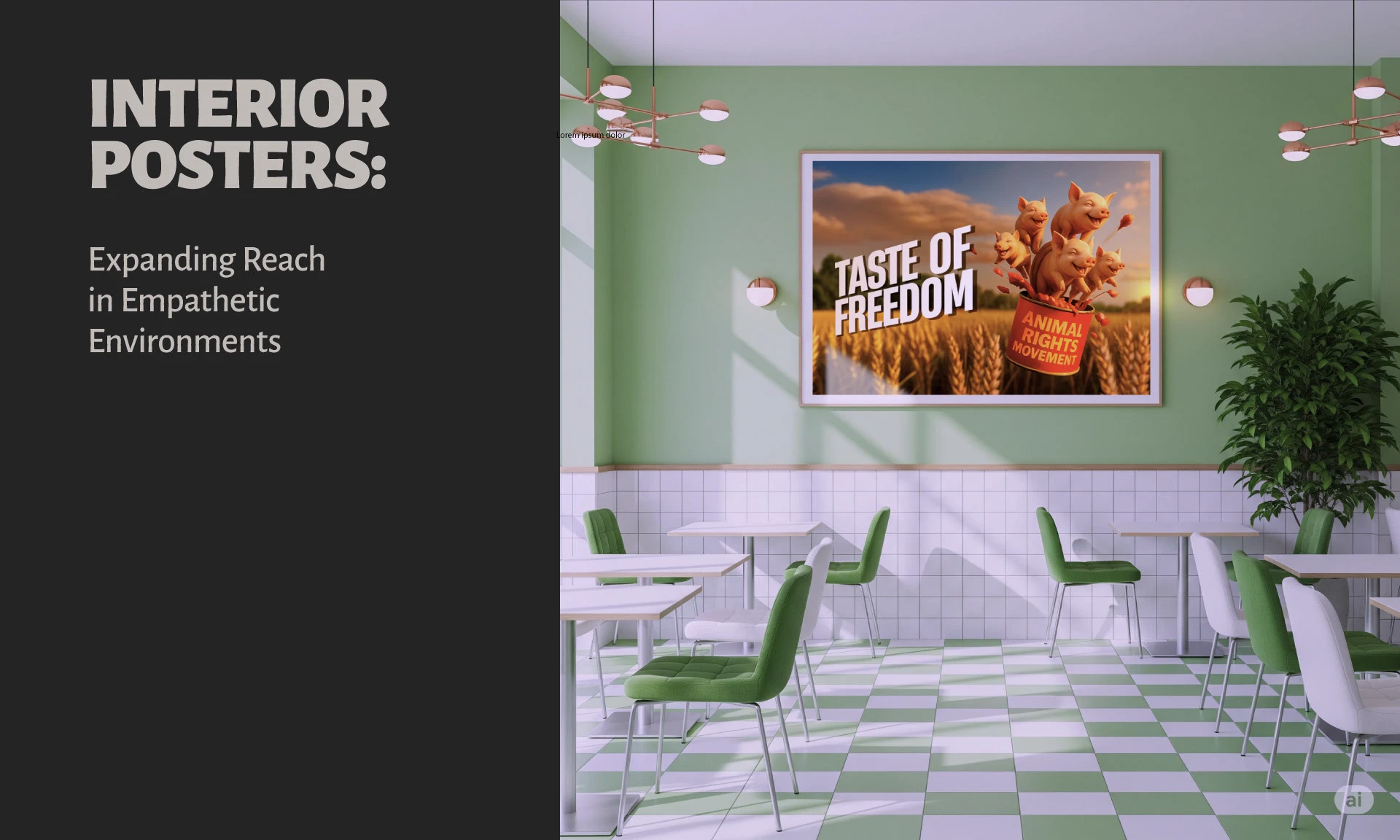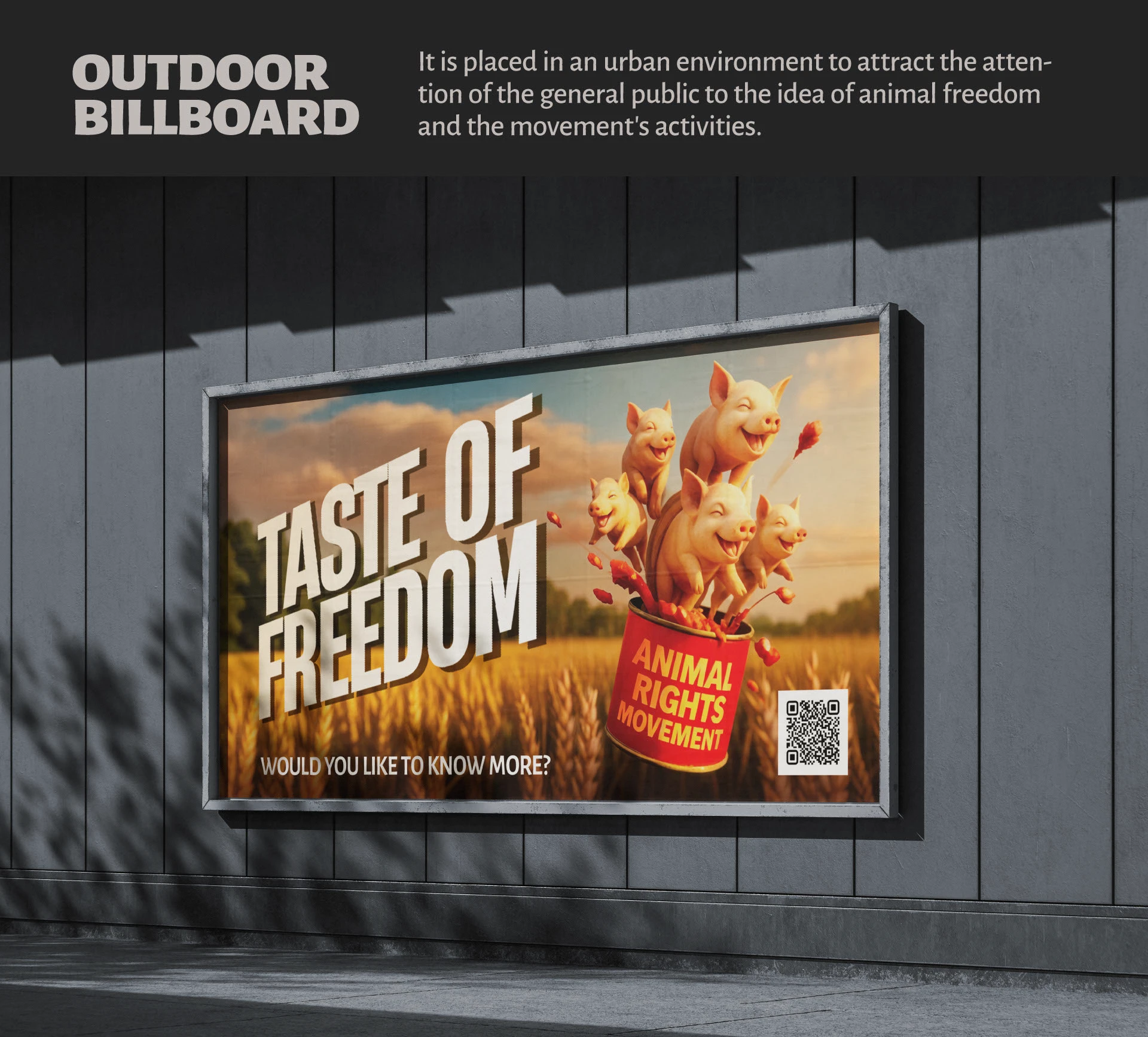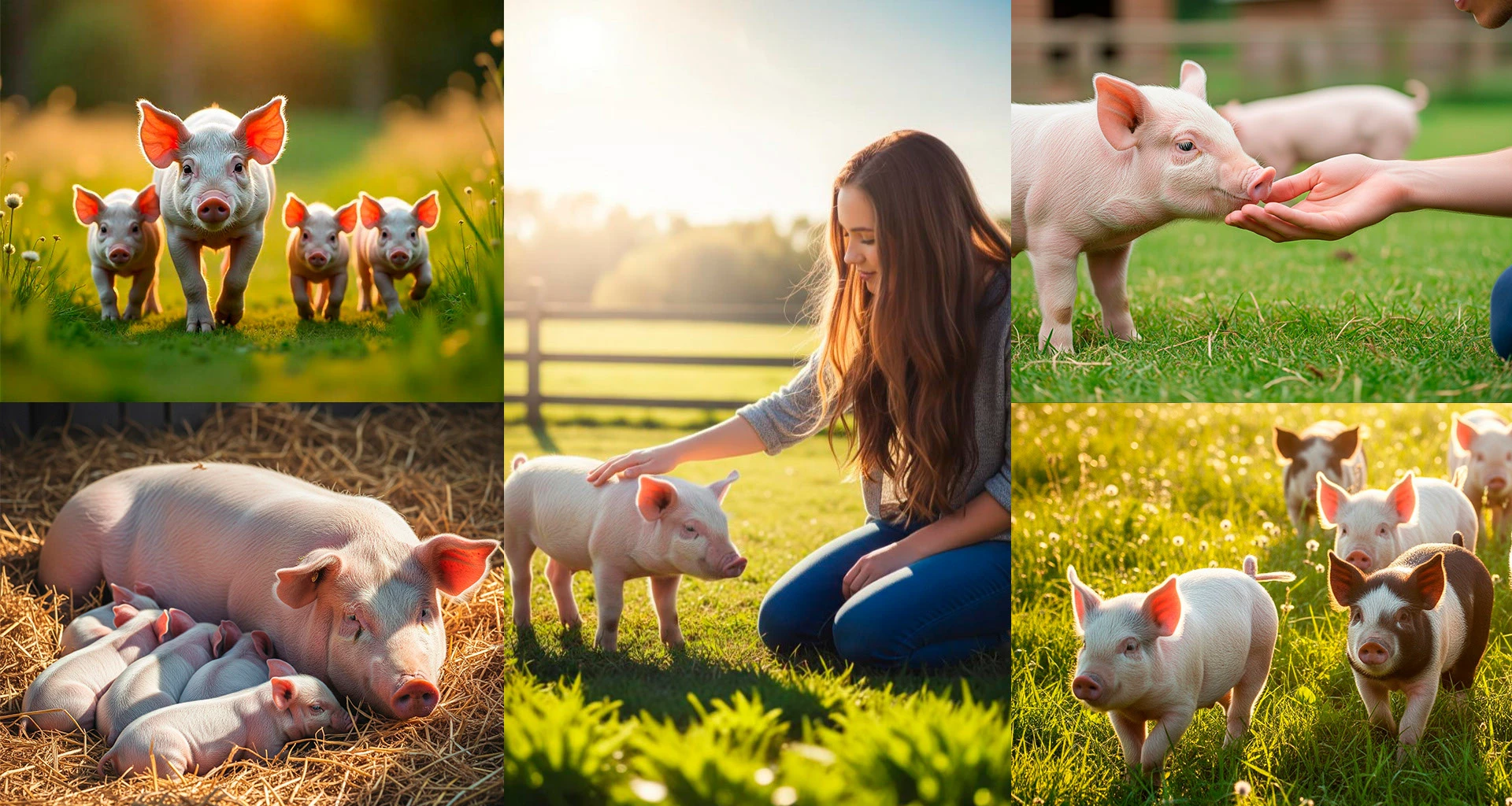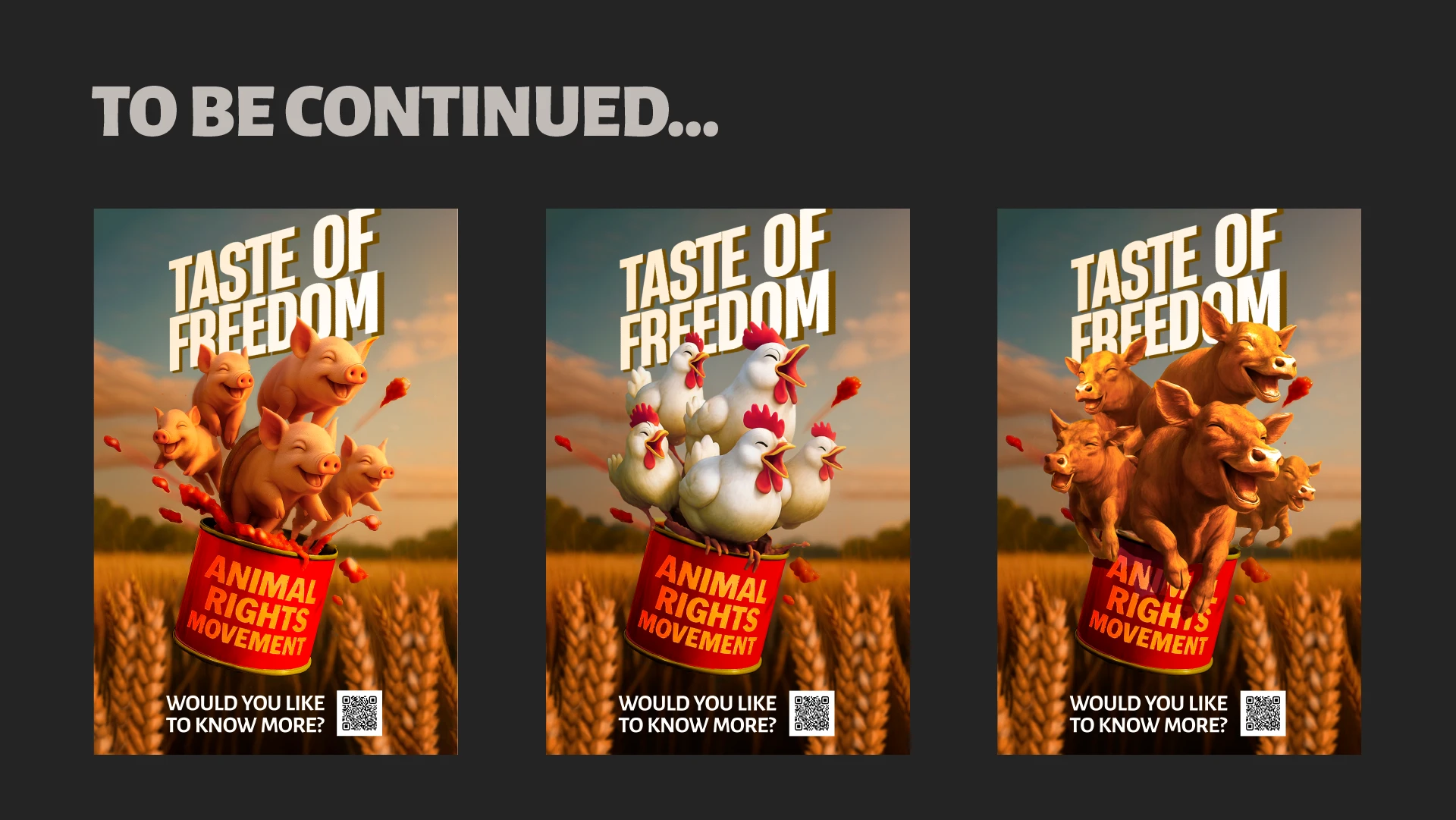'TASTE OF FREEDOM' is a conceptual awareness campaign exposing the cruelty of industrial farming.
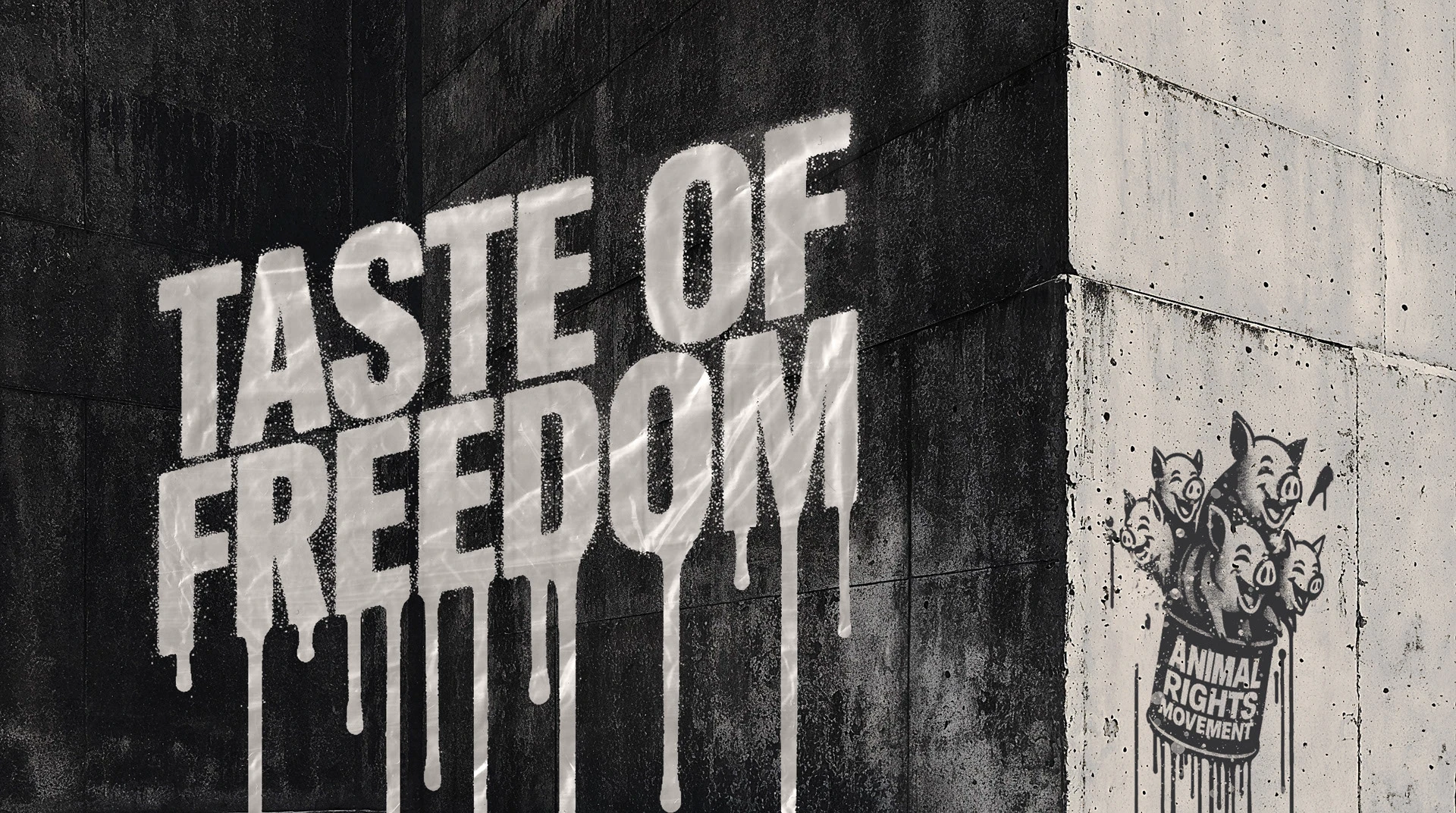
'TASTE OF FREEDOM' is a conceptual awareness campaign exposing the cruelty of industrial farming.
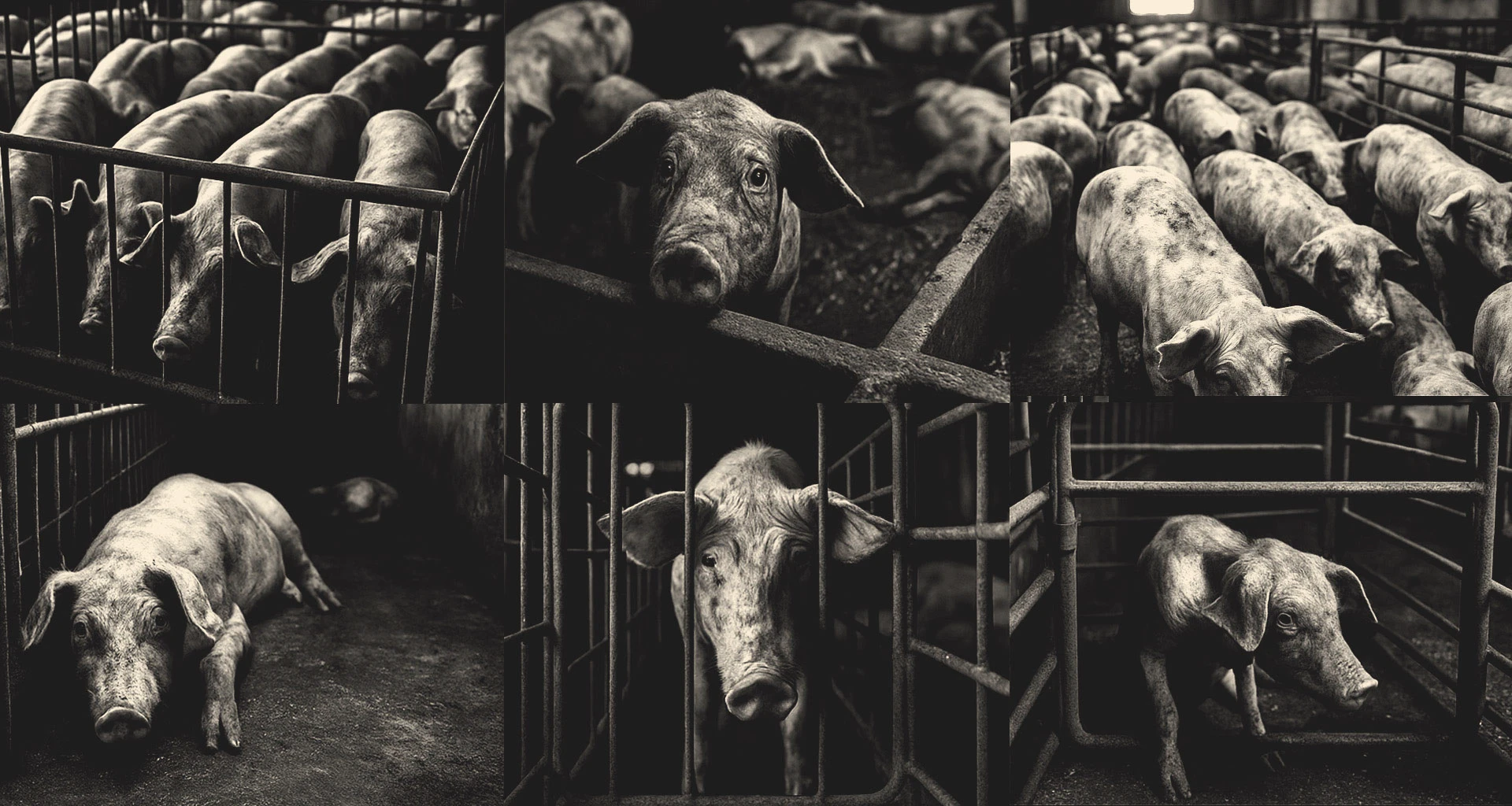
In today’s world, issues surrounding animal rights are becoming increasingly significant. Public awareness of problems related to the exploitation of animals in the food industry, entertainment, and other sectors is growing every year. A core objective of the Animal Rights Movement is the fight for the freedom and dignified existence of animals.
'Taste of Freedom' vividly expresses the concept of liberating animals from constraints and suffering, making it a powerful symbol for promoting the idea of animal protection.This case study will focus on analyzing the effectiveness of using this concept as part of an Animal Rights Movement campaign. We will explore how this concept can be used to attract public attention, create emotional engagement, and motivate people to actively participate in defending animal rights.

Freedom is their true taste
They just want to live. To run free, play, and feel the sun. But for many animals, reality is a confined space and a single purpose. The 'Taste of Freedom' project is our cry for those who cannot cry themselves. See what true freedom looks like! Are you ready to join a movement that's changing the world for the better?
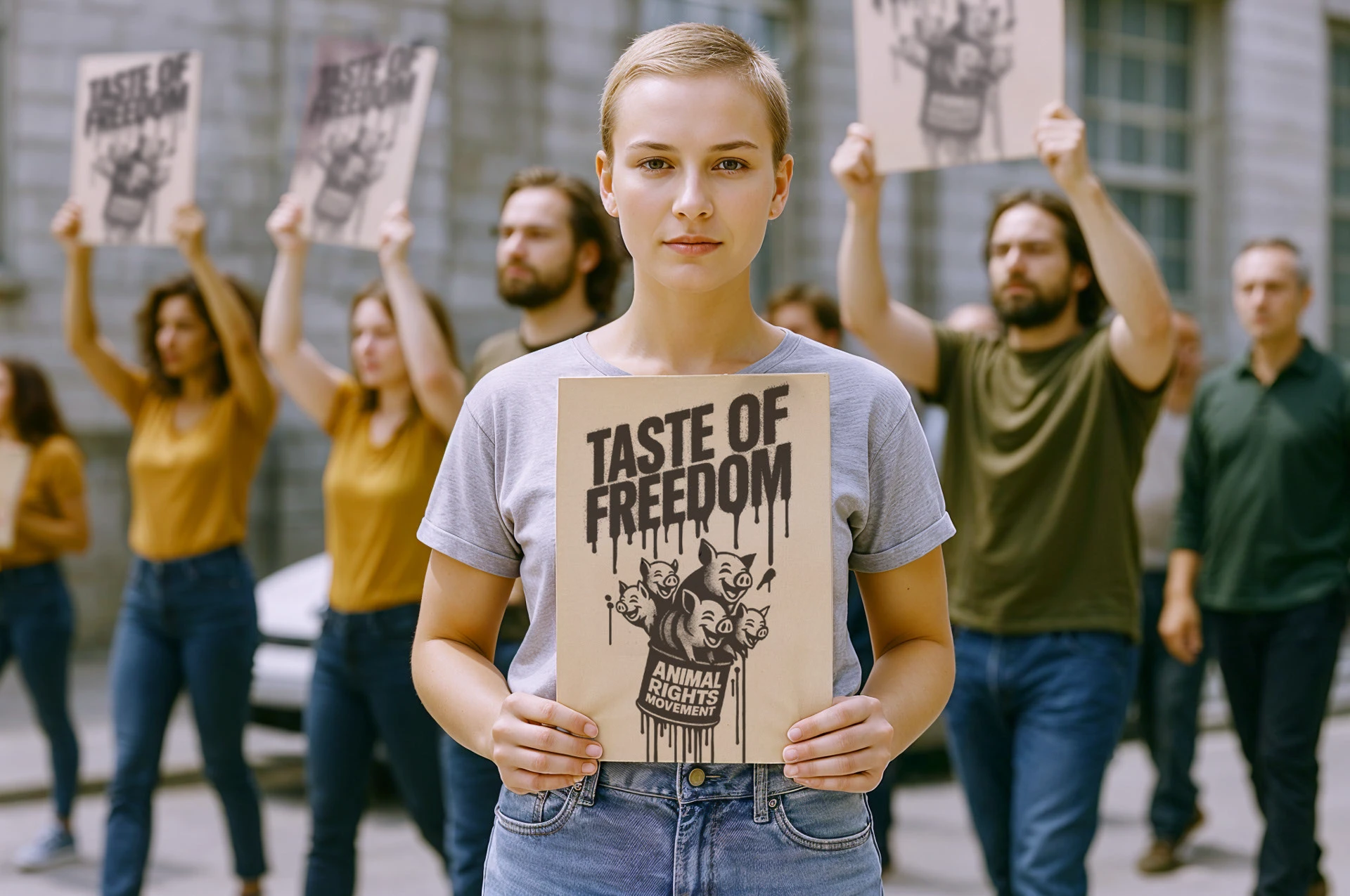
Project Objective
The goal of this project is to create a comprehensive campaign titled "Taste of Freedom," utilizing the presented image as the central element to promote the ideas of the animal rights movement. The campaign should not only inform the audience about the issues but also evoke an emotional response that encourages people to take action.
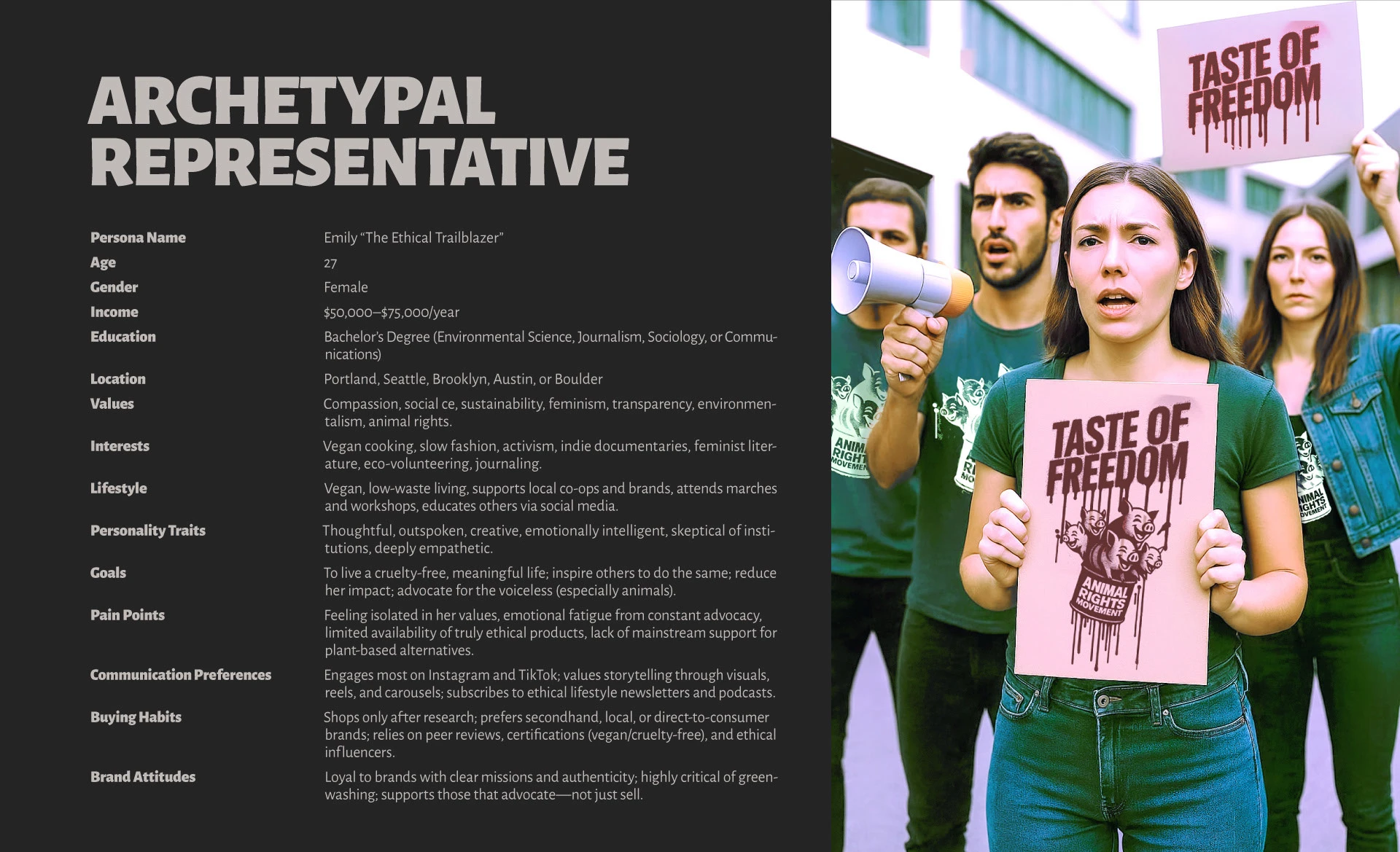
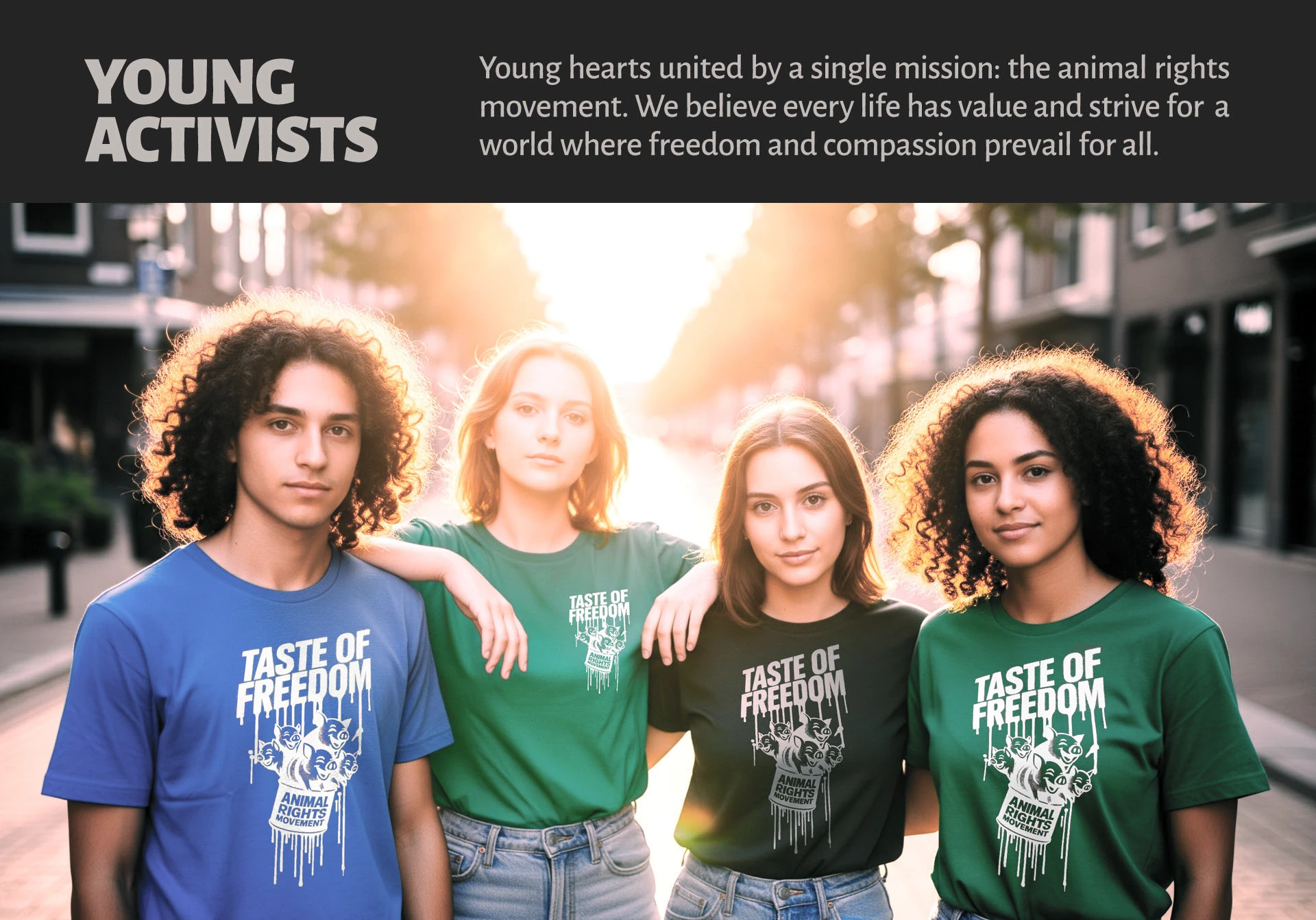
To achieve maximum reach and engage diverse audience segments, the 'Taste of Freedom' campaign employs two key visual strategies for its promotional materials:
Stylized/Stenciled Imagery:
• These graphic, often monochromatic images (as seen on protest placards and branded T-shirts) serve as a direct continuation of the aggressive, street aesthetic.
• Their purpose is to create a sense of authenticity, uncompromising stance, and belonging to the movement. • They are ideal for merchandising, reinforcing activists' identification with the campaign.
• Target Audience: Activists, movement supporters, individuals ready for direct expression of their views.
Full-Color/Illustrative Imagery:
• These bright, emotional images (as featured on billboards, subway, and restaurant posters) are designed to attract and inform a wider, mass audience.
• Their role is to evoke empathy, positive associations with freedom and hope, and encourage further exploration of the issue in a 'friendly' manner.
• Target Audience: The general public, potential supporters, individuals open to new information but not ready for direct confrontation.
Thus, each style serves its unique purpose, ensuring maximum campaign effectiveness across all levels of communication.
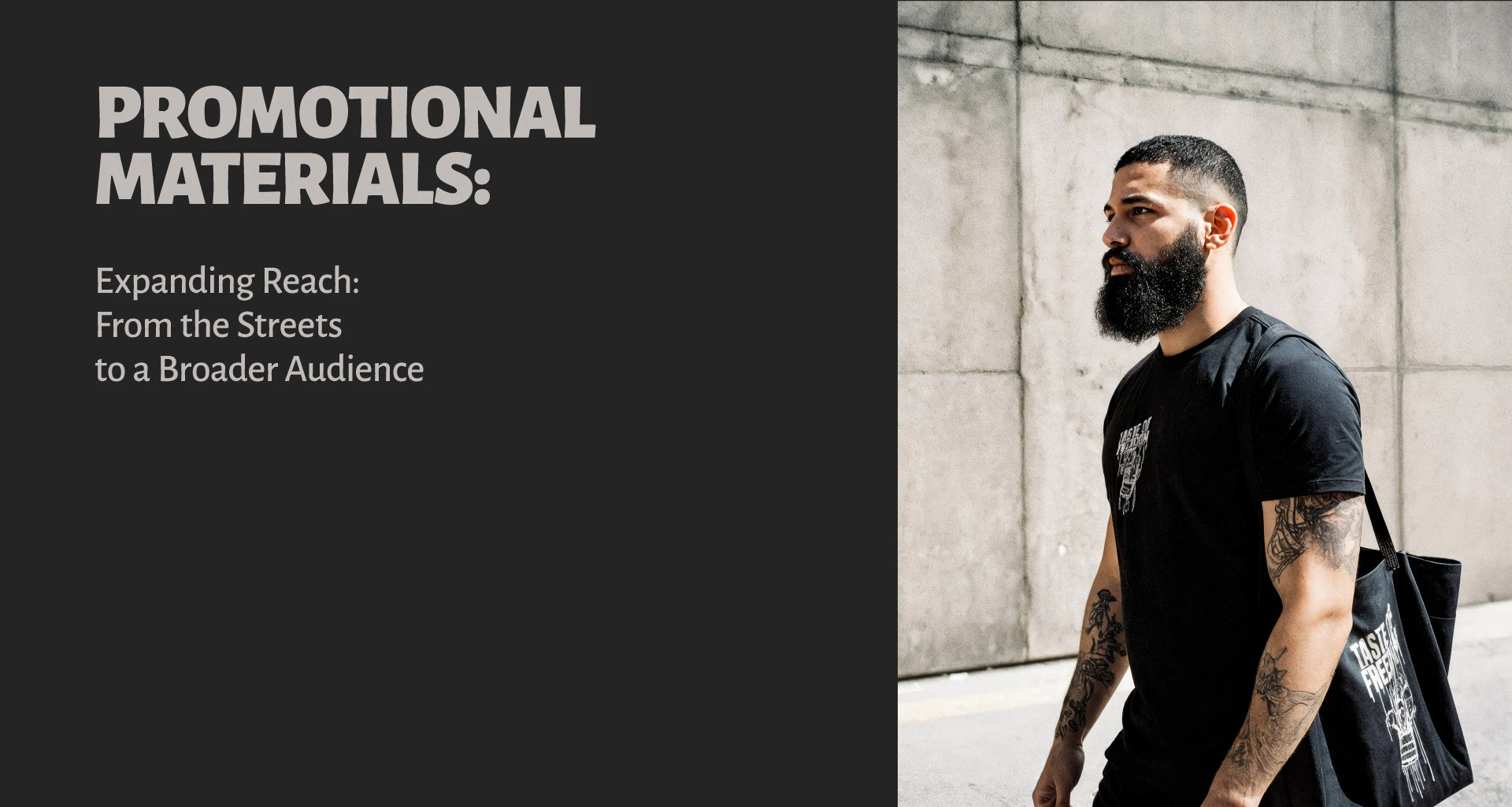
The tin can serves as a symbol of imprisonment, from which happy piglets — embodying all animals — make their long-awaited escape. The scattered droplets are not merely an element of dynamism; they symbolize the obstacles and 'blood' shed on the path to achieving true freedom. This visual narrative urges the viewer to profoundly re-evaluate our interaction with the animal world and recognize their right to a natural existence. 'Taste of Freedom' is not just a slogan, but an invitation to reflect on every creature's right to live without limitations, on the genuine taste of freedom that every inhabitant of our planet so craves.
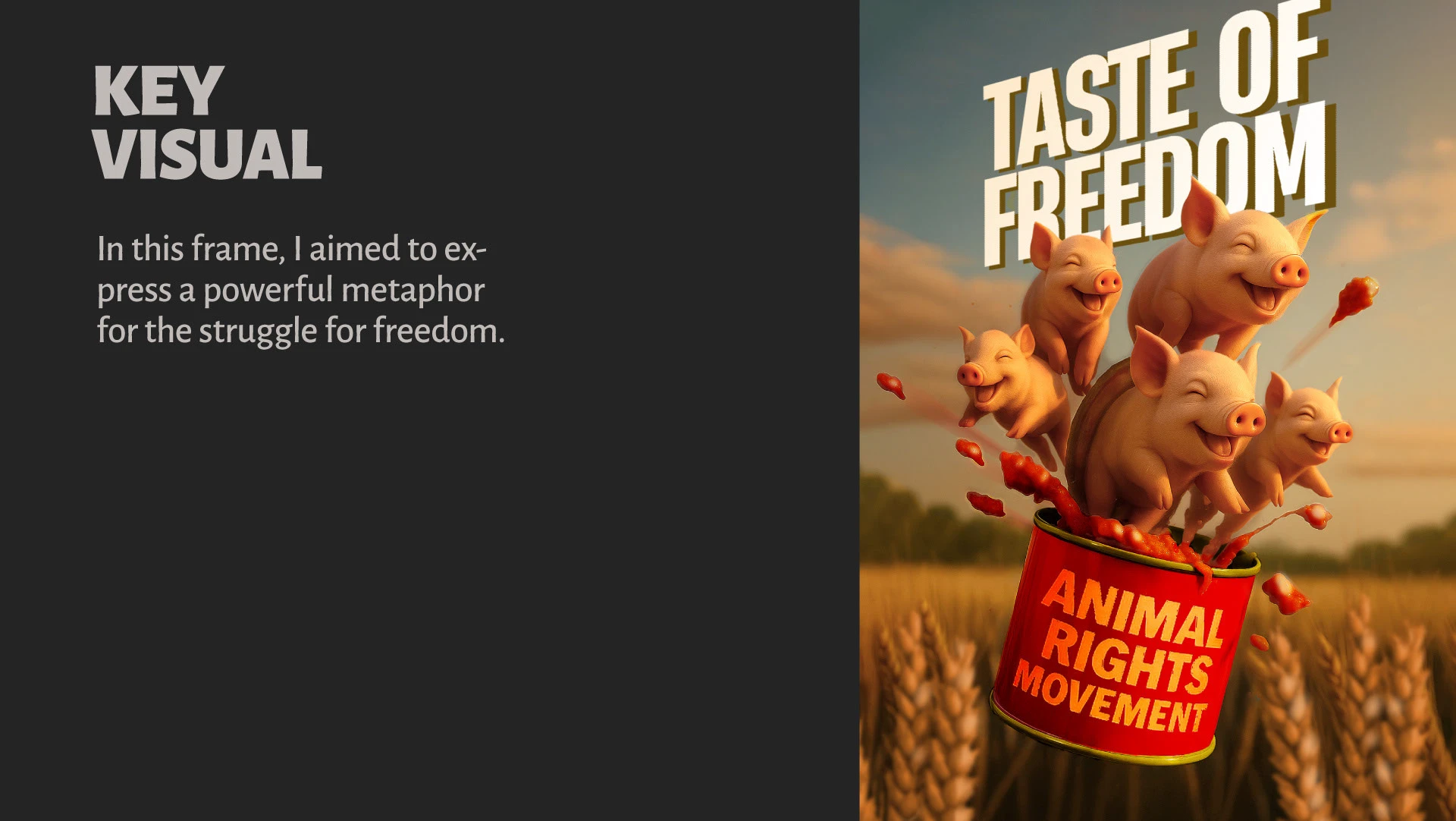
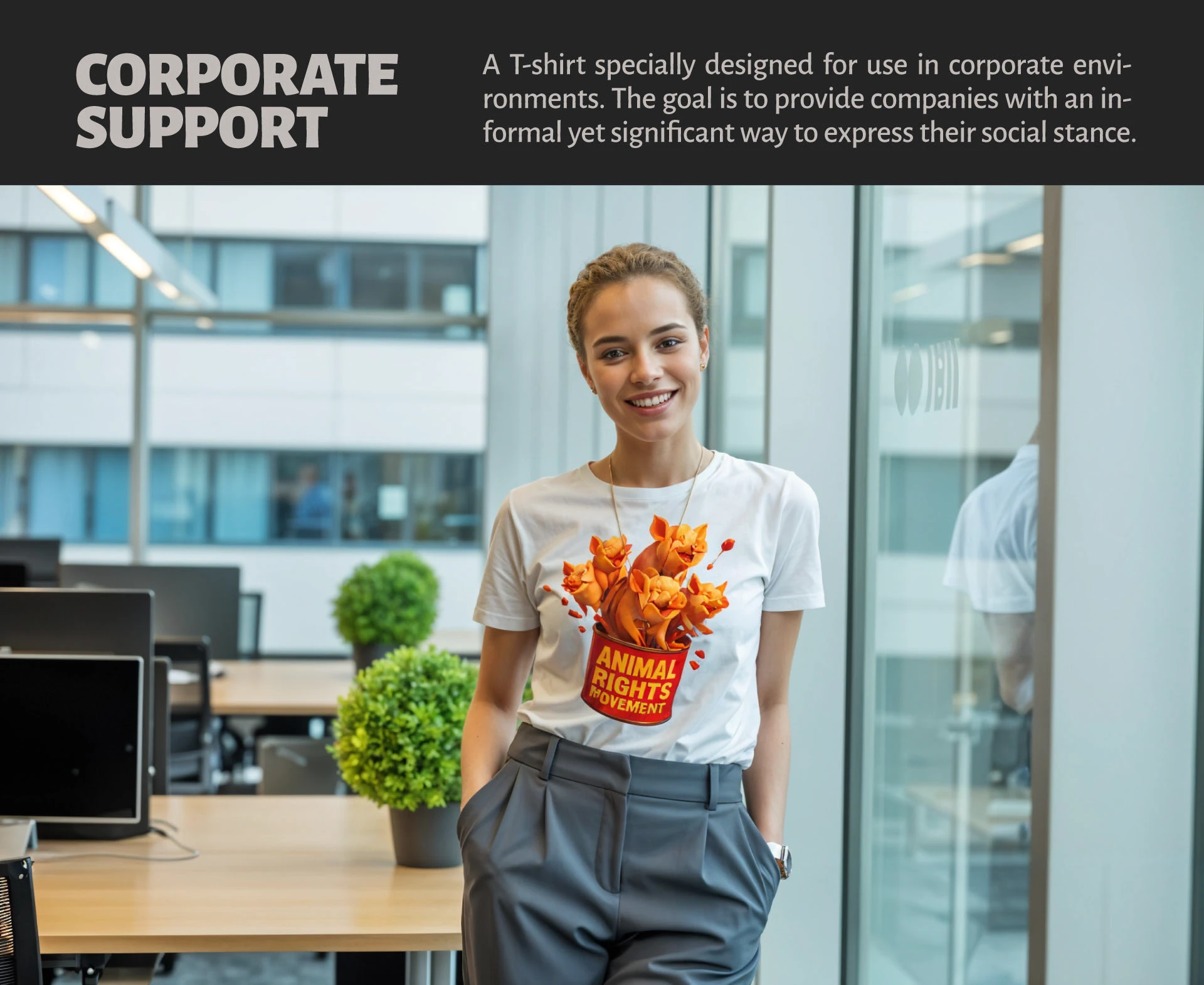
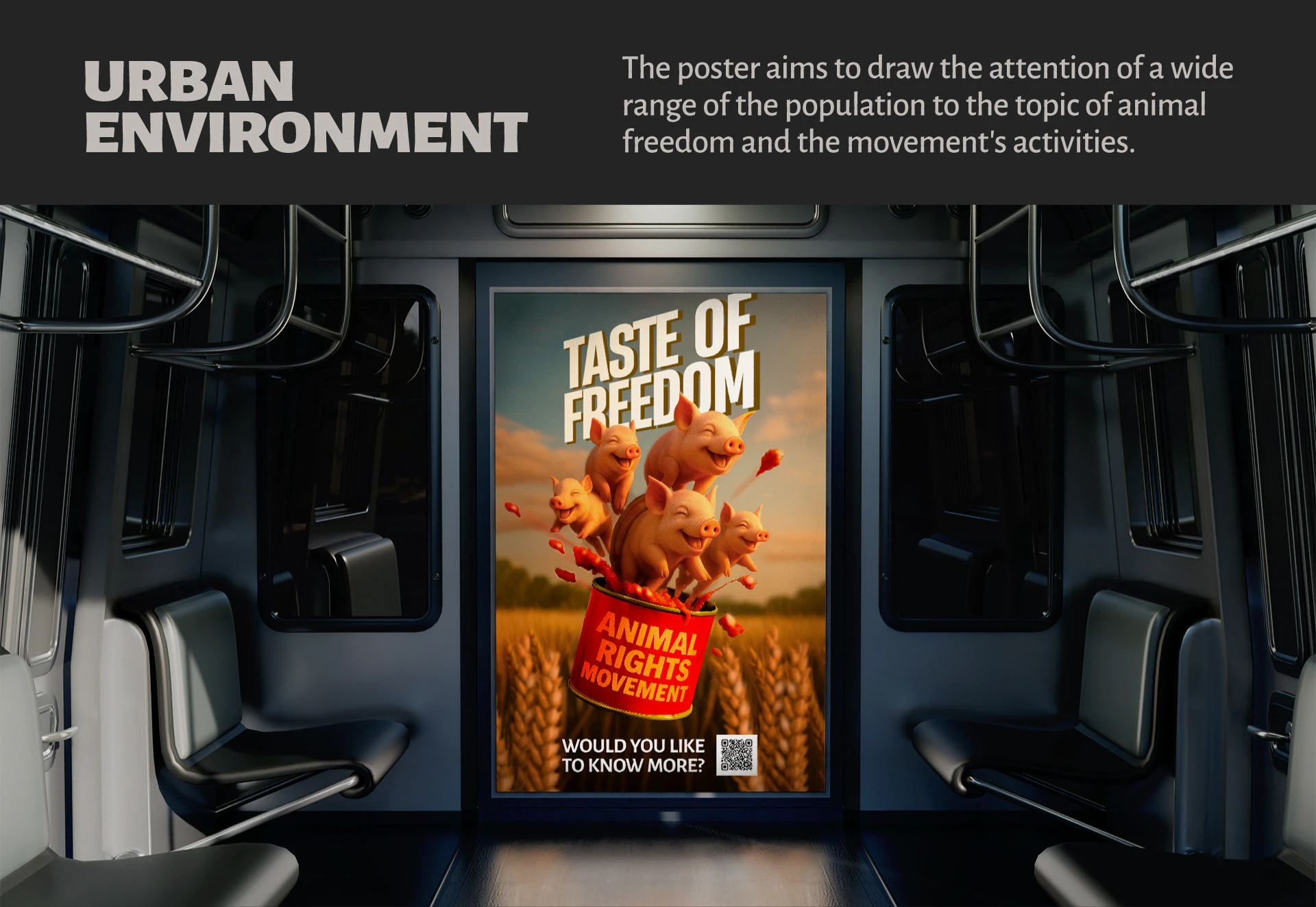
To reach audiences in specific, conscious environments such as vegan restaurants, cafes, and eco-spaces, I developed full-color posters that convey a positive and empathetic message.
This visual language utilizes bright, lively images of free piglets against a wheat field backdrop, evoking feelings of compassion and connection. The posters seamlessly integrate into the interior aesthetics, serving as a subtle yet profound reminder of the value of life and ethical choices.
They are designed to encourage further exploration of the issue and support for the initiative within an atmosphere conducive to reflection and conscious decision-making.
